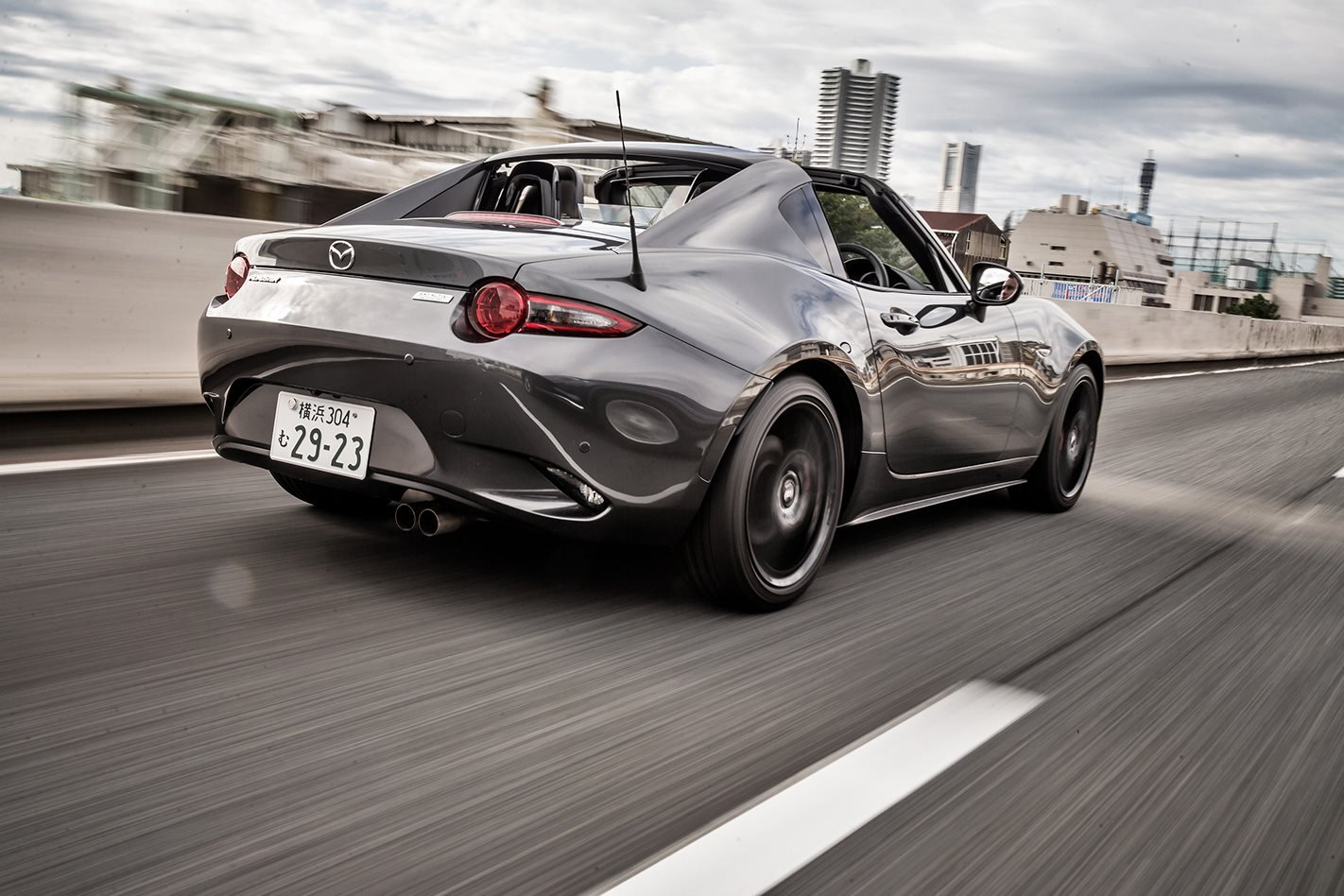WITH the exception of that time I was on my way to an air-cooled Vee Dub festival in Cornwall and a group of bikini-clad girls started distributing lollies to the endless tailback of cars, and that time a hot-air balloon made a bad landing on the A303 and side-swiped a Saab 900, traffic jams have never been exciting.
And yet, here I am, sitting in a queue of motionless cars, about to add a third occasion to that list. The relative silence around my little convertible is resoundingly obliterated by a swarm of lurid 1980s motorcycles. The battalion of possessed Bosozoku bikes scythe their way through the traffic, free-flow exhausts piercing my eardrums, a trail of dazzling lights and fluro airbrushed livery tracing through the traffic like a hallucination.
On a week-day, these representatives of bizarre youth sub-culture are probably riding the JR Line train, faces buried in smartphones like millions of other Japanese commuters, but today – Sunday – they are expressing themselves in the most unforgettable and unapologetic way.

The way someone behaves in their own environment often serves as a direct portal to their inner character, and provides a unique glimpse into what makes them, well, them. That’s exactly why, only a short time before these psychedelic bikers assaulted my senses, I was standing holding the keys to a 2019 Mazda MX-5 somewhere in Tokyo’s southern industrial districts.
Attributing the success and recognition of the bantam sportscar solely to the recipe of lightweight construction, front-engined, rear-wheel-drive layout is unfairly simplistic. Mazda’s engineering accolades have been extensively examined and documented, and there’s little to discover retracing those elements. Instead, I’m hoping some time in the updated MX-5 RF at its home ground will help me unravel exactly what it is about the little two-seater’s personality that has helped pave a 30-year path to universal acclaim, including three Wheels Car of the Year wins.
IT’S A journey that starts on a sultry early morning in the capital and will end, all going to plan, in the shadow of Mt Fuji, the country’s most iconic geological landmark, where I’ll celebrate the 40th anniversary of the MX-5’s older sibling, the RX-7. But before that, I have some Japanese culture to absorb. And I’m not talking about karaoke bars and hot cans of coffee from vending machines. I’m seeking the unexpected side of Japan that surprises and amazes me without exception each time I visit this fascinating country.
As the psychedelic bikers dissipate and the gridlock clears, the freeway to Tokyo’s west begins to unclog and the distant mountains roll closer, prompting my first detour into hopefully more interesting byways. Until now, the predominant traffic has been almost exclusively small and Japanese, but as the road climbs and the turns tighten, a Porsche 911 GT3 RS blasts past. A few seconds elapse and it’s followed by a McLaren 650S in hot pursuit.
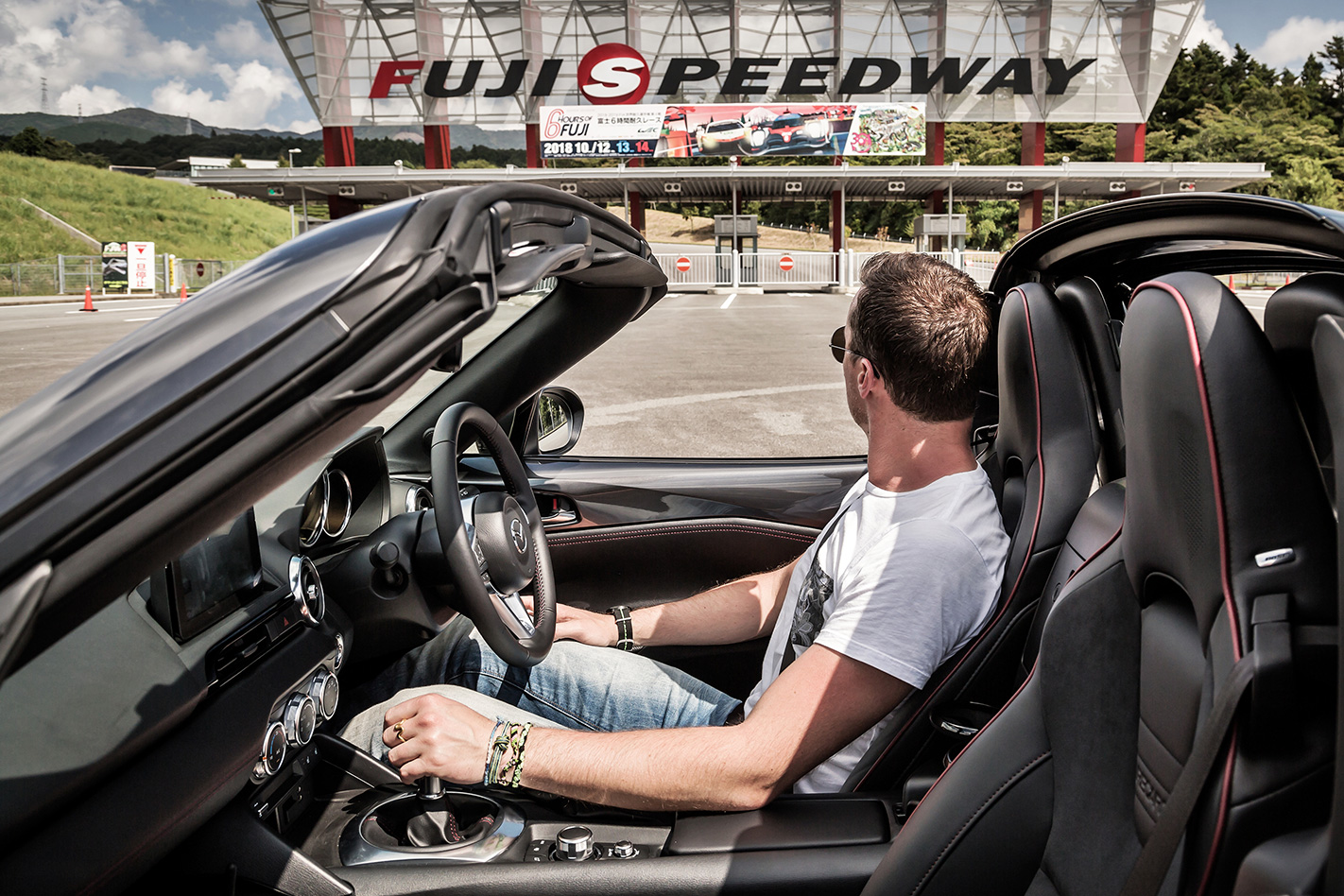
I think I’m heading into a driving enthusiasts’ mecca. But instead of an addictive black ribbon stretched out indefinitely, the road terminates at the Daikanzan Observatory. You might come here for views of the incredible and impossibly placed Mt Fuji or to catch a spectacular sunset, but this afternoon the carpark is rammed with a dizzyingly diverse spread of cool cars.
A pair of KTM X-Bows – one standard, the other barely road legal – a fleet of Caterhams, all the key European players, a squadron of NB MX-5s; they’re all here. The owner of one particularly savage-looking belly-dragger takes great pride in showing me the expensive Lithuanian short-shifter, but I’m distracted by his car’s ridiculously fat haunches and racing rubber that barely clears the arches. More rare bikes turn up followed by more exotic supercars and the carpark dollar value skyrockets.
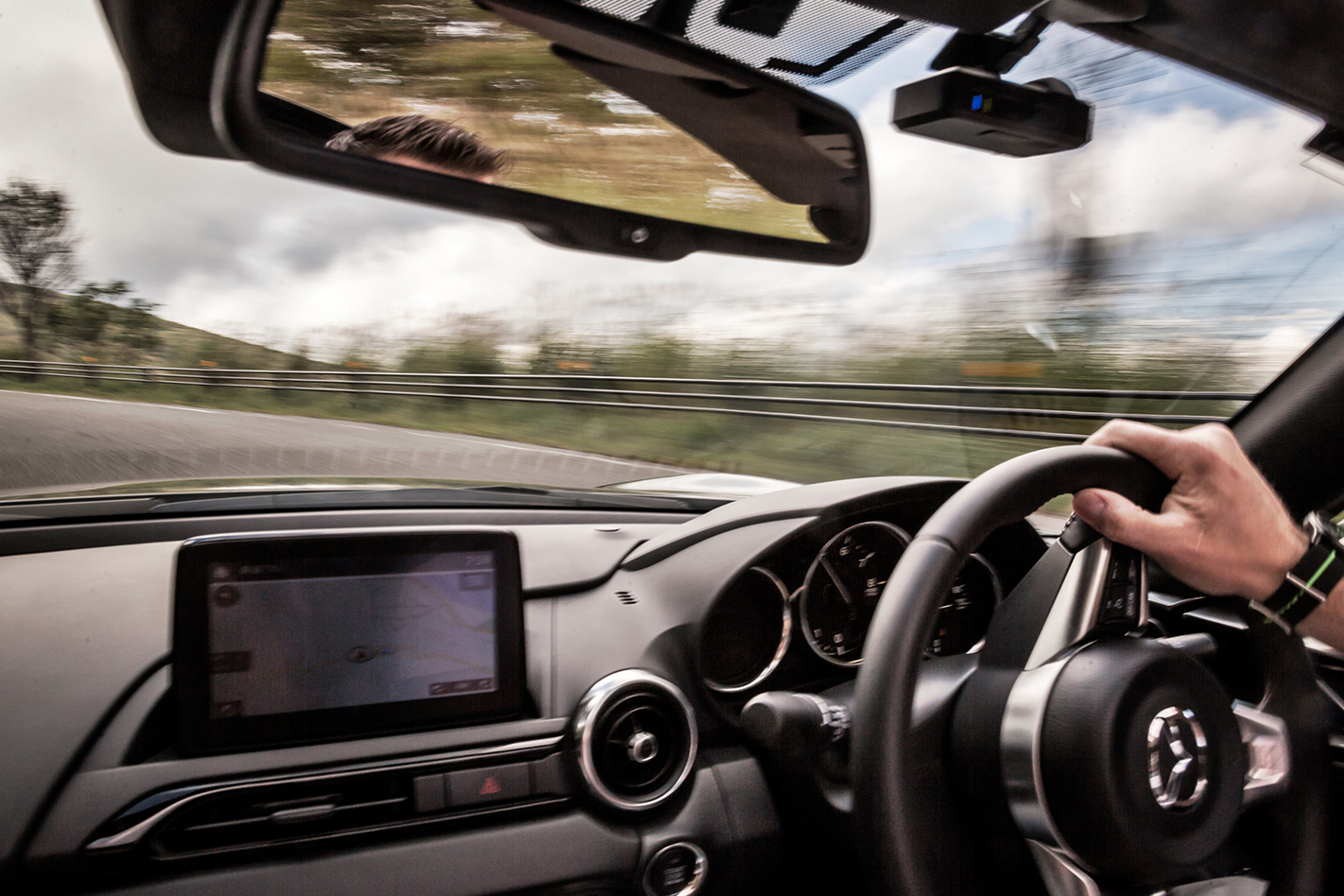
The Porsche, McLaren and all the other delicious hardware did not head here exclusively for the drive. They came here to be among their own – petrolheads united by a love of performance and cool metal. Fuji pokes out from above the clouds, dwarfing everything, but there’s no time to gawp – the cars are dissipating and I follow their lead.
More freeway miles provide another neat analogy for this country. The efficiency of fast, well-maintained roads is constantly punctuated by toll booths, representing the nation’s passion for bureaucracy. But the monotony is at last severed by another detour, this time via a 10km privately operated toll road that hacks through the verdant Japanese countryside like a pissed woodworm, tiptoeing along a ridgeline and following the western shore of Lake Ashi. With views of an even closer Fuji ahead and vistas diving down to the lake to the east, it really is as good as it sounds.
Satellite images suggest the Hakone and Ashinoko Skyline roads will offer the kind of remote mountain blast sportscar fanatics fantasise about. But on arrival, hopes are dashed by the discovery that a blanket 40km/h speed limit, from start to finish, hobbles this otherwise perfect road. However, it becomes apparent that the majority of users blatantly ignore the signs and hey, I’m not one to mess with local customs.
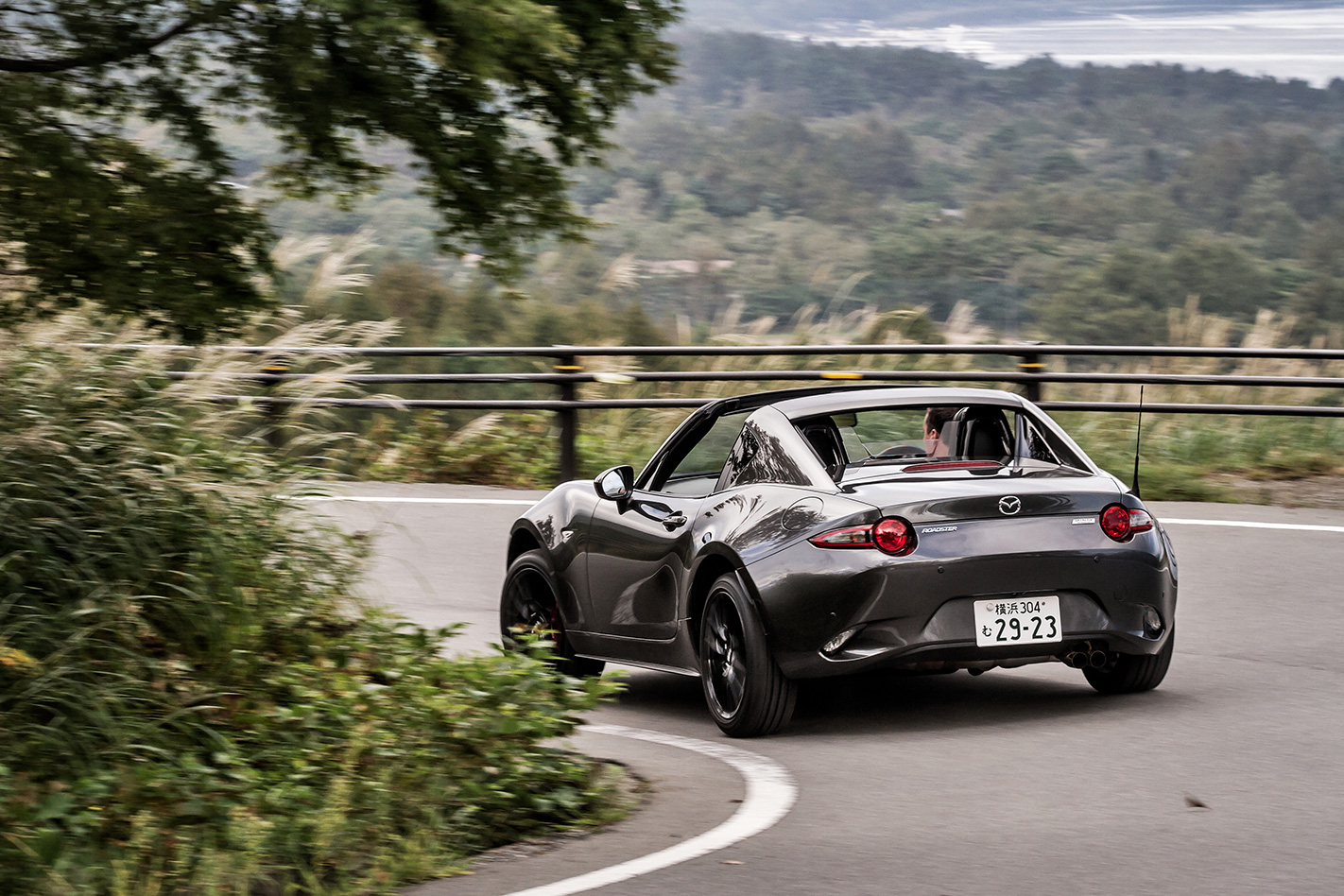
It’s only now, with an irresistible mélange of turns laid out before me, that I get a proper chance to appreciate the changes Mazda implemented for the updated ND.
A few boxy kei cars are quickly despatched and I’m already grinning at the new rev limit that nudges 8000rpm. There’s a more urgent exhaust note that announces the extensive internal mechanical improvements and a strength in the top end of the rev range that wasn’t present in the less highly strung 2.0-litre four.
For the 2018 update, Mazda gave the engine a romantically old-school power-up, with shorter skirt pistons, lighter conrods, modified crank, larger valves, revised camshaft profiles, new injectors and a redesigned inlet manifold. It’s refreshing in an era of chip-tuning.
Where you might have previously banged the selector over another notch early, the enhanced 2.0-litre urges you to tickle the redline in every gear. The extra spice in the top end also helps offset the extra weight of my RF over the soft-top.

There’s no doubt the previous version was a great unit for the MX-5, but while that engine felt like it had been borrowed from another more pedestrian model, the 2018 2.0-litre feels as though it was designed specifically for a lightweight sportscar.
The first autumnal freshness creeps into the damp air as the sun slides behind Fuji, and I descend the mountain to our digs for the evening, but the roof stays open.
I’M WOKEN the next day by the unmistakable sound of a rotary engine cold-idling in the hotel basement carpark. Its bark is a war horn summoning others to the nearby circuit nestled beneath the mountain, but before I join them I have one last chance to stretch the MX-5’s legs.
The Mikuni Pass cleaves a path from Lake Yamanaka over Mt Mikuni and ends, conveniently next to my destination – the Fuji Speedway. Tearing myself from the futon’s embrace will allow me a couple of hours before the crowds gather. And I’ll be glad I did.
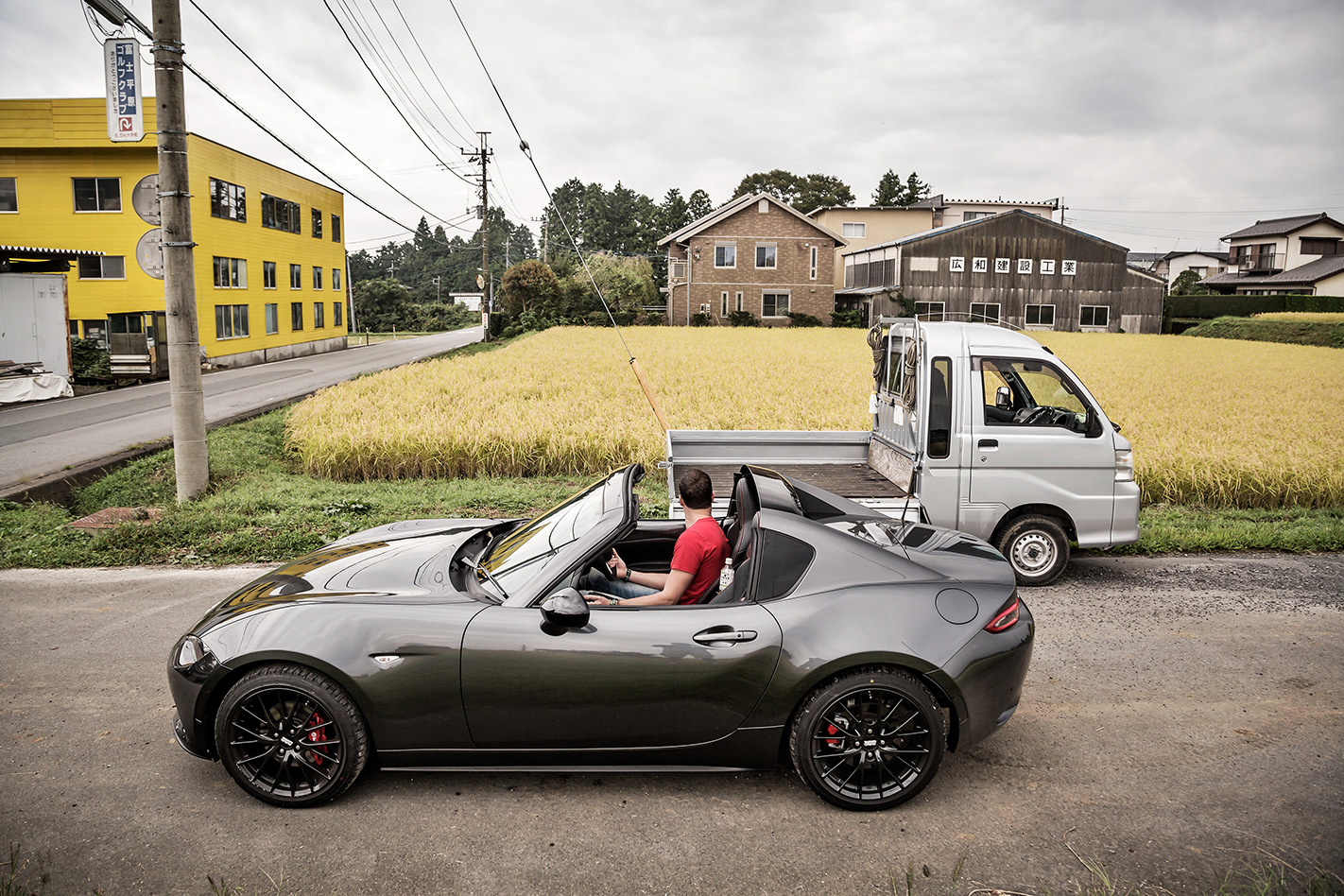
The roads are deserted and the pass beckons irresistibly into the clouds, offering a flowing series of bends that look as though they have been designed for the MX-5. Slingshot corners eject the little sportscar with a flair of tail-slide and the new rev limit requires only second and occasionally third to maintain brisk progress.
The MX-5 chassis engineers could have easily tuned the ND to be Bonneville flat through corners, but I respect the decision to opt for a softer calibration and, happily, there are no suspension revisions for the 2019 update. Rather than a stiffly suspended chassis that gives you little chat right up to the moment you’re about to spear into a tree arse-first, the Mazda leans into a corner and talks you through technical sections like its hands are on yours. Perfect for roads like these where feedback is everything and mistakes are embarrassing at best.
Retracing my steps for several passes over the mountain, the Mazda allows me to build up to its limits of adhesion confidently and not blindly up to the limits of my ability.

That’s a little typical Japanese friendliness coming through right there. The roads are starting to clog with hot metal. Probably best then that my journey in the best MX-5 to date has drawn to a close as planned at the gates of the Fuji Speedway, but there’s time for one more chapter in this tale of Mazda magic.
Japan is a nation of fascinatingly complex paradoxes.From Monday morning to Friday evening, its population obediently shuffles back and forth from home to work in a river of white shirts and face masks, never once questioning the rules that govern society. Yes, the ancient guiding principles of the Japanese work ethic are slowly changing in a nation that’s torn between tradition and modernisation but, more often than not, company employees will remain pinned to their desks until their manager has left the office, regardless of the hour and workload.
Put simply, it’s a country that places immeasurable importance on core virtues: respect, politeness, honour, and trust. But as soon as the time card is punched, something else is added: the enjoyment of life itself.
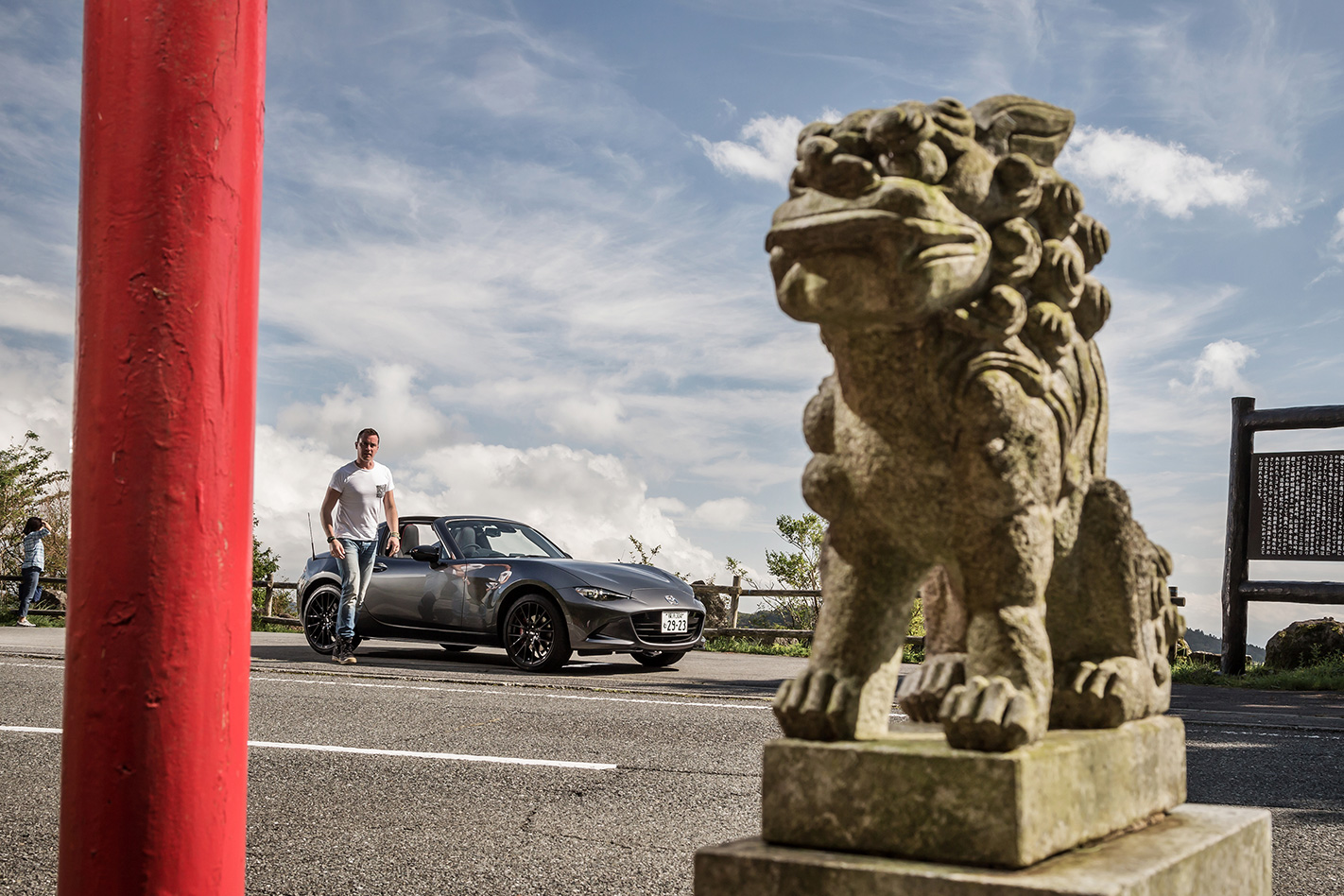
And it’s only as I’m once again riding public transport on a Friday night through endless Tokyo suburbs that I finally understand, not just my road companion of the last few days, but each generation of the MX-5 spanning 30 years.
The little Mazda roadster is the automotive embodiment of Japanese principles – an accessible pricetag and unbreakable reliability are the MX-5’s staunch work ethic, but when the weekend comes around, boy, does it know how to have fun. Sure, the MX-5’s formulaic recipe, which borrows all of the attributes of old English sportscars (without the steaming radiator and worn trunnions) is certainly part of its phenomenal success, but trying to understand this driver’s car icon by looking at oily bits alone is misguided. A car that so beautifully balances affordable, stoic dependability with joyous, simplistic enjoyment could only ever be a product of Japan’s dazzling culture.


